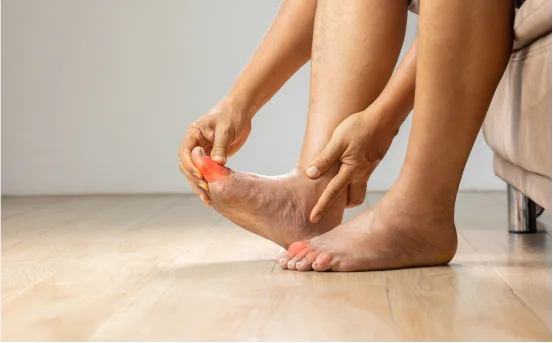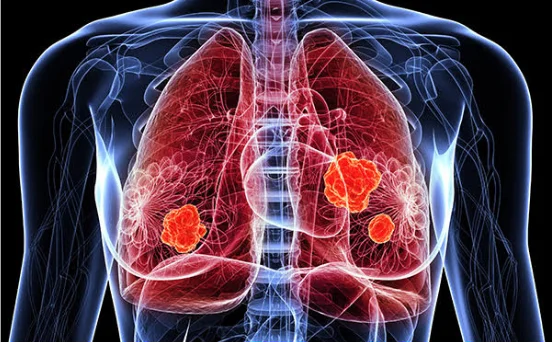Gout disease is a painful and common form of inflammatory arthritis that affects millions of people around the world. Characterized by sudden, severe attacks of pain, redness, swelling, and tenderness in the joints often the big toe gout is caused by elevated levels of uric acid in the blood, leading to the formation of sharp urate crystals in the joints.
Gout is caused by high levels of uric acid in the blood, which crystallize in the joints and trigger inflammation. These flare-ups can be so painful that even the light pressure of a bedsheet on the affected area may feel unbearable. But beyond the discomfort, gout is a serious medical condition that requires attention. If left untreated, it can lead to chronic joint damage, kidney stones, and other long-term complications.
What is Gout Disease?
Gout is a type of arthritis that results from the buildup of uric acid crystals in the joints. Uric acid is a waste product formed when the body breaks down substances called purines, which are found in certain foods and drinks. When there’s too much uric acid in the blood a condition known as hyperuricemia it can crystallize and deposit in the joints, leading to inflammation and intense pain.
Gout usually occurs in sudden flares, often at night, and can be debilitating. Over time, if left untreated, it can cause permanent joint damage and lead to chronic arthritis.
Who is at Risk of Gout?
Gout can affect anyone, but certain factors increase the risk :-
-
Gender :- Men are more likely to develop gout than women.
-
Age :- Risk increases with age, typically appearing between 30–50 in men and post-menopause in women.
-
Genetics :- A family history of gout increases your chances.
-
Diet :- High intake of red meat, seafood, sugary drinks, and alcohol.
-
Medical Conditions :- High blood pressure, diabetes, kidney disease, and obesity.
-
Medications :- Diuretics (water pills), aspirin, and drugs used in chemotherapy.
Symptoms of Gout
The symptoms of gout usually appear suddenly and may include :-
-
Intense Joint Pain :- Most often in the big toe, but also in knees, ankles, elbows, wrists, and fingers.
-
Redness and Swelling :- The affected joint becomes inflamed, warm, and swollen.
-
Limited Range of Motion :- As the attack progresses, moving the joint becomes difficult.
-
Lingering Discomfort :- Even after the severe pain subsides, the joint may remain uncomfortable for days or weeks.
Gout attacks often occur at night and can last from a few days to a week or more.
What Causes Gout?
Gout is caused by elevated levels of uric acid in the blood. This excess uric acid can result from :-
Overproduction of Uric Acid :- Some people produce too much uric acid due to genetic or metabolic factors.
Underexcretion by the Kidneys :- Most often, gout is caused by the kidneys failing to remove enough uric acid from the body.
Dietary Factors
Foods high in purines can contribute significantly :-
-
Organ meats (liver, kidney)
-
Red meats (beef, lamb, pork)
-
Seafood (anchovies, sardines, mussels, tuna)
-
Sugary beverages and alcohol (especially beer and spirits)
Medical Conditions
-
Obesity
-
High blood pressure
-
Metabolic syndrome
-
Type 2 diabetes
-
Kidney disorders
How is Gout Diagnosed?
Diagnosing gout involves a combination of physical examination, medical history, and diagnostic tests.
Physical Examination :- A doctor may assess symptoms such as joint swelling, redness, and tenderness, especially in the big toe or lower limbs.
Blood Test :- A uric acid test measures levels in the blood. However, high uric acid doesn’t always mean gout—and normal levels don’t rule it out during a flare-up.
Joint Fluid Test :- A sample of fluid is taken from the swollen joint to check for uric acid crystals under a microscope this is the most definitive test.
X-rays or Ultrasound :- Imaging may help detect joint damage or urate crystal buildup.
Gout Treatment Options
Gout treatment focuses on managing pain during flare-ups and reducing uric acid levels to prevent future attacks.
Medications for Acute Attacks
-
NSAIDs (Non-steroidal anti-inflammatory drugs) :- Like ibuprofen or naproxen, to relieve pain and inflammation.
-
Colchicine :- Effective in reducing gout symptoms if taken early.
-
Corticosteroids :- Oral or injectable steroids to control inflammation.
Uric Acid-Lowering Medications
For long-term management :-
-
Allopurinol :- Reduces the amount of uric acid produced.
-
Febuxostat :- Another xanthine oxidase inhibitor used when allopurinol isn’t suitable.
-
Probenecid :- Increases uric acid excretion via the kidneys.
Lifestyle Changes
-
Dietary Modifications :- Avoid purine-rich foods, sugary drinks, and alcohol.
-
Weight Loss :- Reduces the burden on joints and lowers uric acid.
-
Stay Hydrated :- Water helps flush uric acid out of the body.
Can Gout Be Cured?
Gout cannot be completely cured, but with proper treatment and lifestyle changes, it can be effectively managed. Many patients go years without a flare-up once uric acid levels are controlled. The goal is to prevent joint damage and reduce the frequency and severity of attacks.
Tips to Prevent Gout Flare-Ups
Preventing gout involves a combination of healthy living and regular medical monitoring :-
-
Limit High-Purine Foods :- Avoid red meats, seafood, and organ meats.
-
Stay Hydrated :- Aim for at least 8-10 glasses of water daily.
-
Exercise Regularly :- Maintain a healthy weight to reduce uric acid levels.
-
Limit Alcohol and Sugary Drinks :- These raise uric acid production.
-
Regular Check-Ups :- Monitor uric acid levels if you’ve had gout before.
-
Take Prescribed Medication :- Don’t stop uric acid-lowering drugs without your doctor’s advice.
Complications of Untreated Gout Disease
If left unmanaged, gout can lead to serious complications, including :-
-
Tophi Formation :- Lumps of urate crystals under the skin, often around joints.
-
Chronic Joint Damage :- Persistent inflammation can erode joints over time.
-
Kidney Stones :- High uric acid levels can form stones in the kidneys.
-
Chronic Gouty Arthritis :- Long-term inflammation leads to permanent joint stiffness and damage.
When to See a Doctor?
If you experience sudden joint pain and swelling, especially in the big toe, seek medical attention. Early diagnosis and treatment can prevent complications and improve quality of life.
See a doctor if :-
-
Pain is severe and sudden
-
The joint is hot, red, or swollen
-
You’ve had a previous gout attack
-
You have high uric acid levels and other risk factors
Conclusion
Gout disease is more than just joint pain it’s a complex and potentially chronic condition caused by excessive uric acid. With prompt diagnosis, the right treatment, and meaningful lifestyle changes, most people with gout can live healthy, flare-free lives. Understanding what triggers gout and taking steps to manage it proactively are key to reducing symptoms and preventing long-term joint damage.























